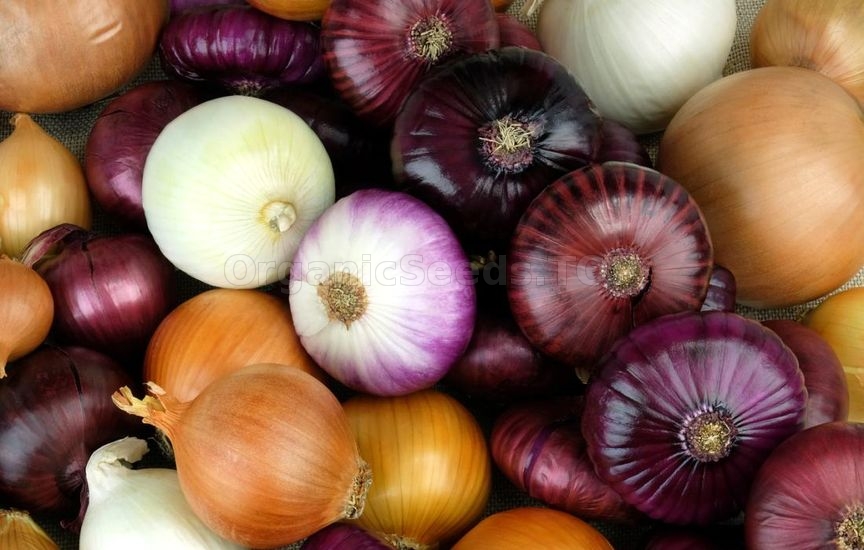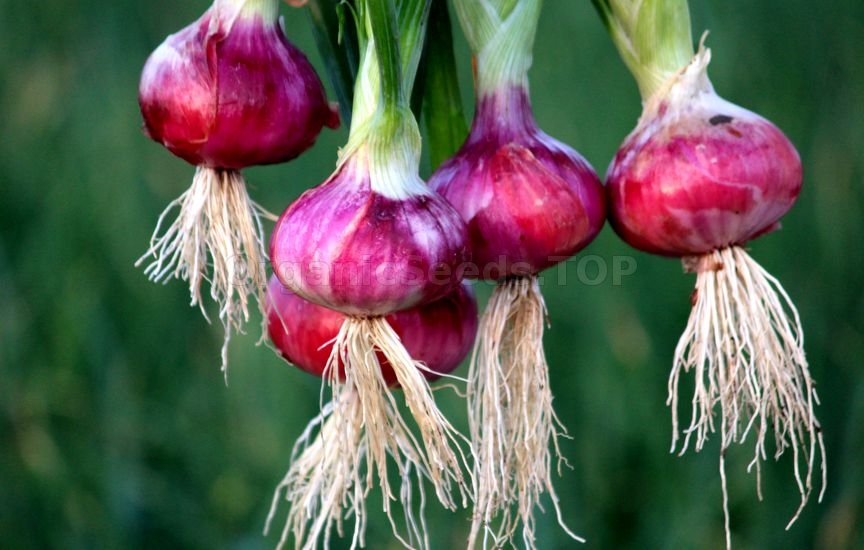3 Ways to Plant Onions |
 There's an onion for nearly every taste and culinary purpose: mild to pungent, tiny pearl onions to big Bermudas. Home gardeners get a choice in how they plant onions, too, with popular methods including sets, transplants, and seeds. Some even employ all three methods under the theory that you can’t have too many onions! First, find out which varieties do best in your region. Since the lengthening days of late spring trigger the transition from growing leaves and roots to the business of forming bulbs, the types of onions that succeed in Northern states differ from those in the South. Seed packets and catalog descriptions should reveal which varieties work well in short-day regions (those that form bulbs when day length is only 10 to 12 hours), intermediate-day regions (12 to 14 hours), or long-day regions (14 to 16 hours). A few onions are considered day-neutral and can grow anywhere. Dixondale Farms, which grows and sells onion transplants, provides this map to aid in variety selection. Note the area of overlap between long-day and intermediate-day regions where varieties of either type can grow and a similar overlapping area for intermediate-day and short-day varieties. Canadian gardeners should select long-day varieties. Once you've found the right type for your garden, here's how each planting method works and how to get started: 1. Sets Set are tiny onion bulbs grown from seeds and forced into dormancy at an immature stage. Once planted in the garden, they resume growing. Sets are the easiest of the three planting techniques and a good way to produce a lot of big onions for storage.
Plant sets two to four weeks before the average last-frost date; your county’s cooperative extension service can tell you when this is. In mild-winter climates, plant onion sets in fall or winter.  Place the sets in a shallow furrow and cover with just enough soil to leave their pointed tips at the soil surface. The spacing between onions should eventually be 4 to 6 inches — depending on the mature size of the variety — but you can place the sets closer together initially and harvest thinnings for use as green onions. A disadvantage of relying on sets is the limited choice of varieties. Most garden centers label their bins of sets by color (white, yellow, or red) instead of by cultivar. You might be tempted to pick out the largest sets from the bin, but these can go to seed quickly instead of forming a large bulb. Sets that are 1⁄2 inch in diameter — about the size of a dime — are the best buy. 2. Transplants Bundles of bareroot onion transplants are available from mail-order retailers in winter and early spring. With a greenhouse or indoor light setup, you can also produce your own. In the North, sow seeds in a flat of seed-starting medium eight to 10 weeks before the last frost for planting outdoors about six weeks later. In the South, time the seedlings to be set out in fall or winter. Thin the emerging seedlings in the flat to stand at least 1⁄2 inch apart in rows about 2 inches apart so they will be easier to separate at transplant time.
 Harden off the seedlings by setting the flat in a sheltered spot outdoors for a few hours a day, gradually acclimating them to a full day of direct sunlight. On the day they are to be planted in the garden, lift the seedlings carefully from the flat and shake the soil from their roots. If the tops have grown tall and wispy, trim them back to about 6 inches.  Dig a trench for the seedlings and place them slightly deeper than they were in the flat. As with sets, seedlings can be planted closer than their ultimate spacing of 4 to 6 inches, with the extras harvested as green onions. 3 Seeds To grow the biggest bulbs, onions benefit from the head start they get from sets or transplants. However, bunching onions or scallions are quicker to mature and they can be seeded directly into the garden.  Sow seeds outdoors about a month before the frost-free date and then again every few weeks through fall for continual harvests; in the South, the season is fall through spring. Start with fresh seeds no more than a year old because they lose viability quickly in storage.  You may need:«Mavka» - Organic Onion Seeds«Gold Princess» - Organic Onion Seeds«Autumn's Giant» - Organic Leek Onion Seeds«Sympathy» - Organic Onion Seeds«Lyubchik» - Ukrainian Heirloom Onion Seeds |
|
|
